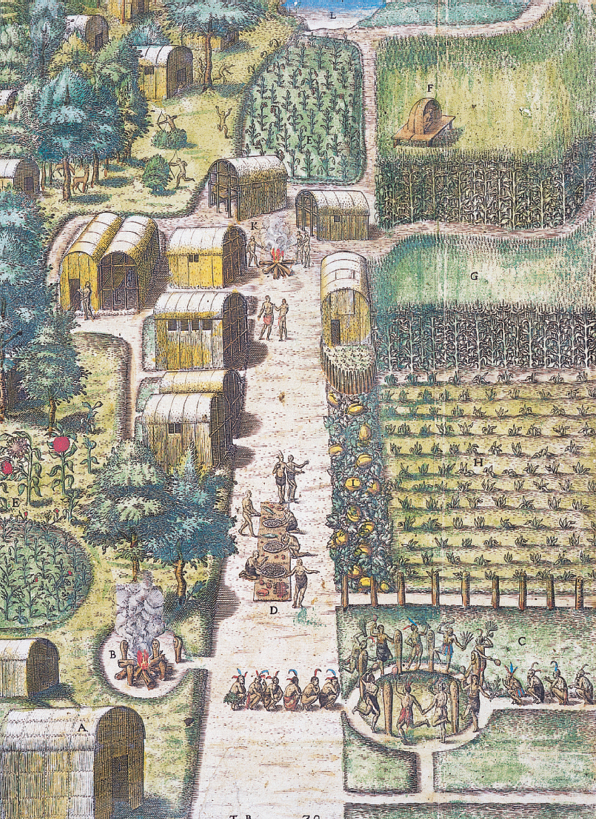What challenges faced early Chesapeake colonists?
Printed Page 56

IN 1606, England’s King James I granted the Virginia Company more than six million acres in North America in hopes of establishing the English equivalent of Spain’s New World empire. Enthusiastic reports from the Roanoke voyages twenty years earlier claimed that in Virginia “the earth bringeth foorth all things in aboundance … without toile or labour.” Investors hoped to profit by growing some valuable exotic crop, finding gold or silver, or raiding Spanish treasure ships. Their hopes failed to confront the difficulties of adapting English desires and expectations to the New World already inhabited by Native Americans. The Jamestown settlement struggled to survive for nearly two decades, until the royal government replaced the private Virginia Company, which never earned a profit for its investors.
CHAPTER LOCATOR
What challenges faced early Chesapeake colonists?
How did Chesapeake tobacco society take shape?
Why did Chesapeake colonial society change in the late seventeenth century?
Why did the southern colonies move toward a slave labor system?
Conclusion: Why were export crops and slave labor important in the growth of the southern colonies?
 LearningCurve
LearningCurve
Check what you know.
CHRONOLOGY
1606
- – Virginia Company receives royal charter.
1607
- – English colonists found Jamestown; Pocahontas “rescues” John Smith.
1617
- – Pocahontas dies in England.
1618
- – Powhatan dies; Opechancanough becomes Algonquian chief.
1619
- – House of Burgesses begins to meet in Virginia.
1622
- – Opechancanough launches an assault on English settlers in Virginia.
1624
- – Virginia becomes a royal colony.